Lens Types
|
|
|
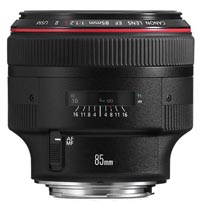 Telephoto lens Telephoto lens Telephoto lenses not only bring a distant subject closer, they also have the effect of compressing perspective because you will generally be further from your subject. Lenses from this range are useful for landscapes or sports and wildlife, where access is restricted. Telephotos are lenses longer than a standard 50mm and a short telephoto in the 90-100mm region is perfect for portrait photography, while 135mm-300mm are more suitable for pulling in distant detail in a landscape or for picking out details on buildings. anything above 300mm is classed as a super telephoto. |
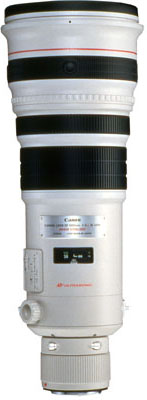 Super telephoto lens Super telephoto lensThese lenses have focal lengths above 300mm and are what the sports and action photographers use to home in on distant subjects. They're also ideal for bird and wildlife photography to shoot timid or dangerous animals from afar. The downside of such a lens is weight and bulk. A tripod is also often needed to hold the len steady. |
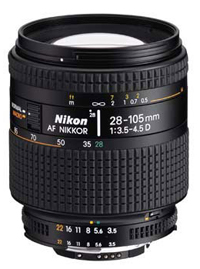 Zoom lens Zoom lens A zoom lens offers a continuously variable focal length, normally without the need to refocus. A wide-angle zoom covers a range of focal lengths that include a wide angle setting. A standard zoom goes from a slight wide angle to telephoto and a telezoom covers a range of telephoto focal lengths. Some zoom lenses are called super zooms because they cover a larger range of focal lengths from wide angle to longer telephoto. |
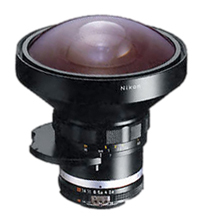 Fish-eye lens Extreme wide-angle lens that gives 180° coverage and is uncorrected for curvilinear distortion so you produce a circular photograph. Fish-eye lens Extreme wide-angle lens that gives 180° coverage and is uncorrected for curvilinear distortion so you produce a circular photograph. |
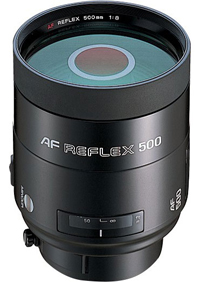 Mirror Lens Mirror Lens This is technically known as a catadioptric lens and has an unusual construction of mirrors and lens elements. As well as glass elements there are mirrors at the front and rear to fold the light as it enters the lens. This results in a casing that's a little wider than normal, but half the length and much lighter. Mirror lenses appear in focal lengths from 300mm to 2000mm. |
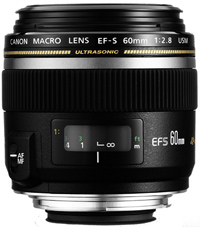 Macro lens Macro lensA lens that is designed to give optimum resolution at close subject distances. Macro lenses are made in focal lengths from 50mm to 200mm. 90-100mm being the most common choice. See this article for more information on close-up photography |
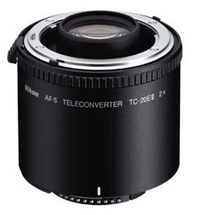 Teleconverters Teleconverters This accessory fits between the camera body and lens to increase the magnification of the the lens. They are available in 1.4x, 1.7x, 2x and 3x magnifications and usually come in different constructions from 3 to 7 elements depending on the quality you are after. Generally speaking, the more elements the better the quality. When used an 80-200mm zoom, for example, becomes a 112-280mm, 136-340mm, 160-400mm and 240-600mm respectively. |
Add your message
Please login here or if you've not registered, you can register here. Registering is safe, quick and free.
photodo Stats
428 MTF tests
74 in-depth photodo reviews
100+ users join each day
Help the lens community by reviewing or rating a lens today via our lens search
Latest Lens Reviews
- Chinon 28mm f/2.8 Vintage Lens Review
- Canon EF 70-200mm f/4L IS II USM Lens Review
- Samyang AF 85mm f/1.4 EF Review
- Sigma 70mm f/2.8 DG Macro Art Review
- Samyang AF 24mm f/2.8 FE Review
- Meike 50mm f/1.7 Review
- Tamron 70-210mm f/4 Di VC USD Review
- Lensbaby Burnside 35mm f/2.8 Review
- Asahi Super Takumar 50mm f/1.4 Review
- Asahi Super-Multi-Coated Takumar 135mm f/3.5 Review
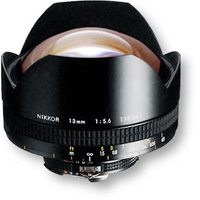 Wide-angle lens
Wide-angle lens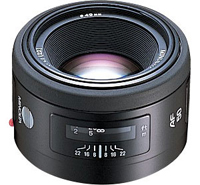 Standard lens A standard lens is so called because it gives roughly the same magnification as the human eye, which is actually around 43mm. This lens used to be supplied with all film cameras when you bought a camera, but once zooms appeared the standard lens took a back seat. It's often preferred by purists because it has three key features. First is speed. A standard lens will have an aparture of f/2 or faster. Most of the modern standard lenses are either f/1.7 of f/1.4. There are also a few f/1.2s and f/1s around too. Secondly the simple construction allows a standard lens to be smaller and lighter making it east to carry around. Third is the fact a standard gives roughly what the eye sees so can ensure what you photograph appears more natural and doesn't place emphasis on what appears to be unnatural perspective.
Standard lens A standard lens is so called because it gives roughly the same magnification as the human eye, which is actually around 43mm. This lens used to be supplied with all film cameras when you bought a camera, but once zooms appeared the standard lens took a back seat. It's often preferred by purists because it has three key features. First is speed. A standard lens will have an aparture of f/2 or faster. Most of the modern standard lenses are either f/1.7 of f/1.4. There are also a few f/1.2s and f/1s around too. Secondly the simple construction allows a standard lens to be smaller and lighter making it east to carry around. Third is the fact a standard gives roughly what the eye sees so can ensure what you photograph appears more natural and doesn't place emphasis on what appears to be unnatural perspective.